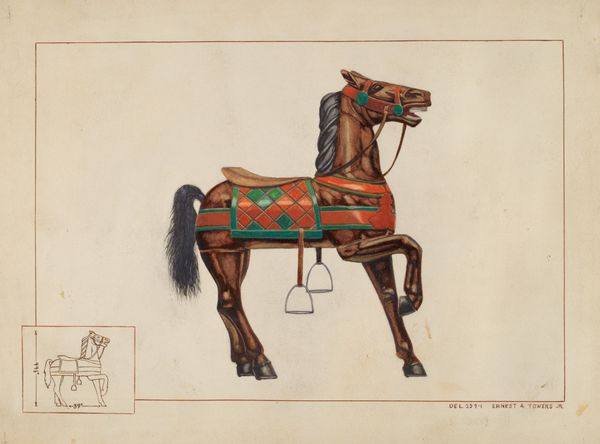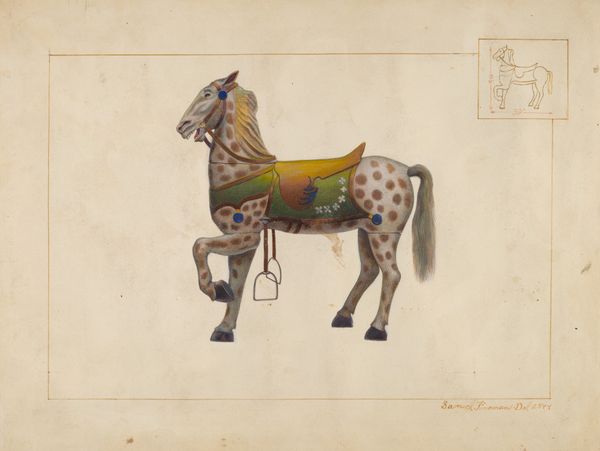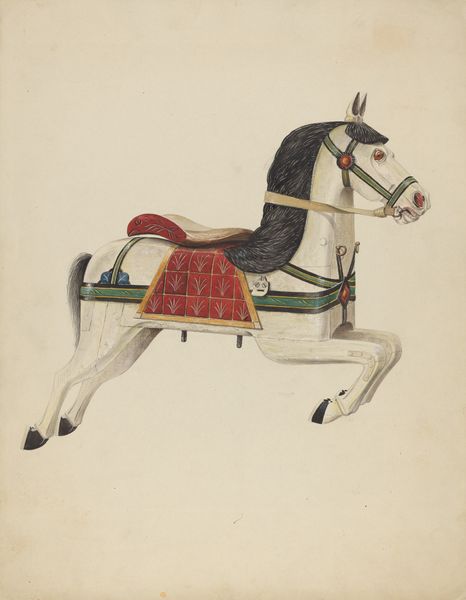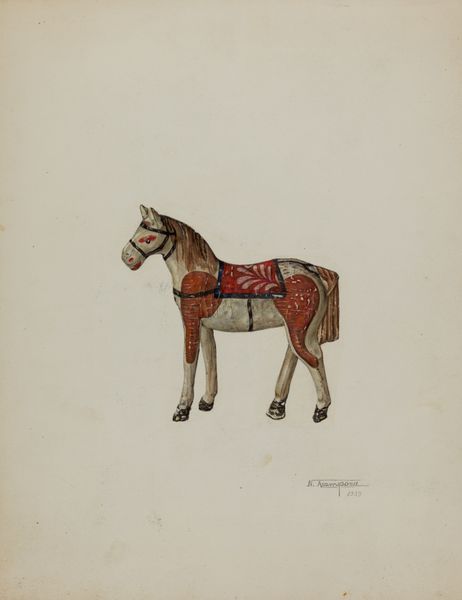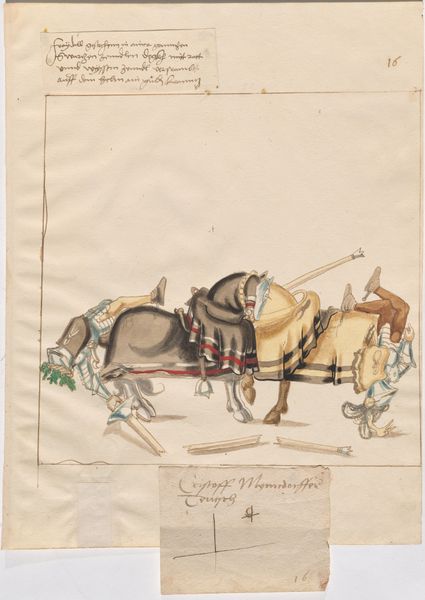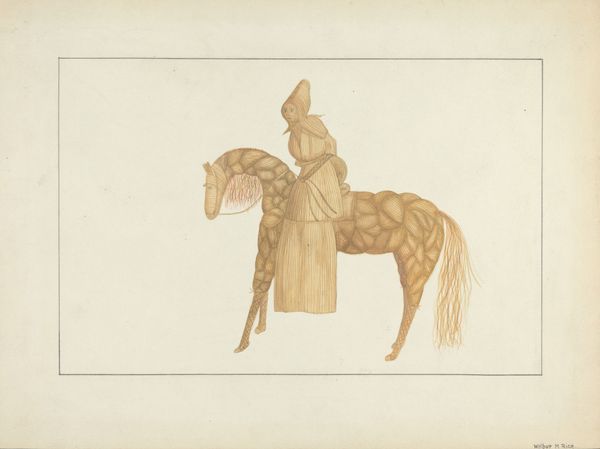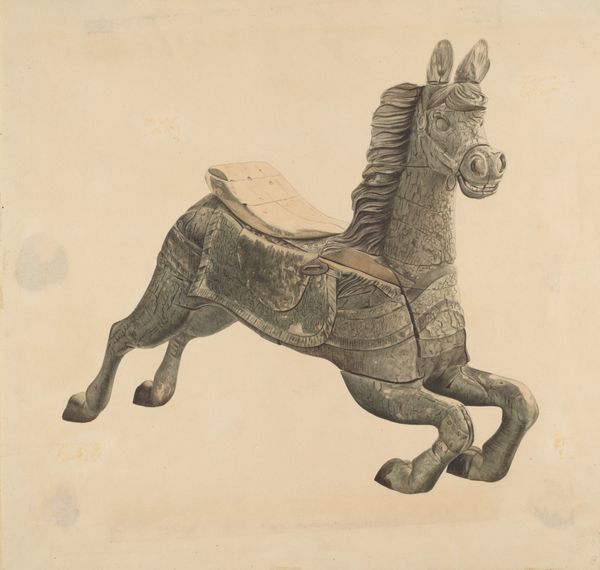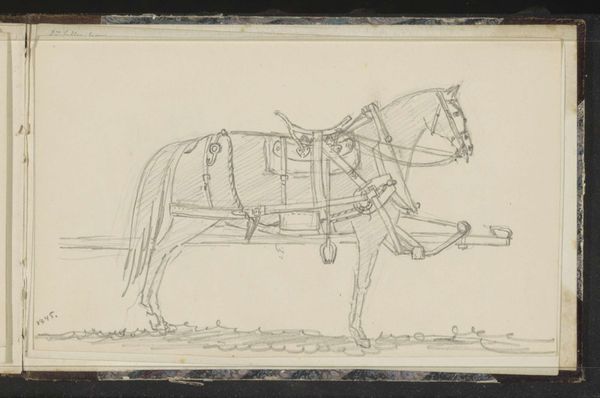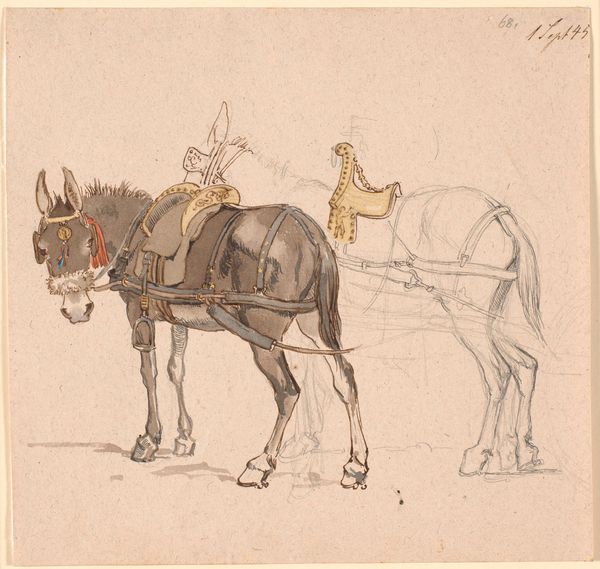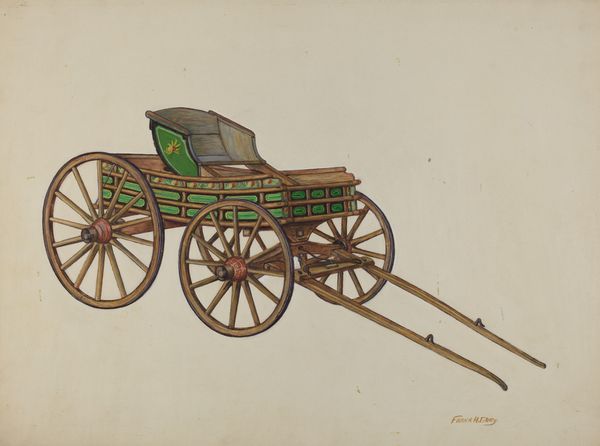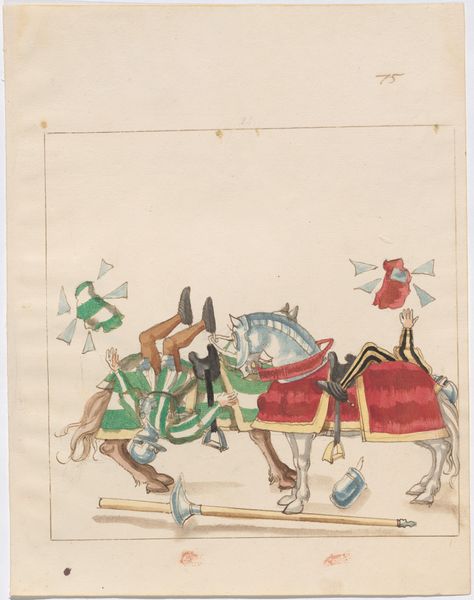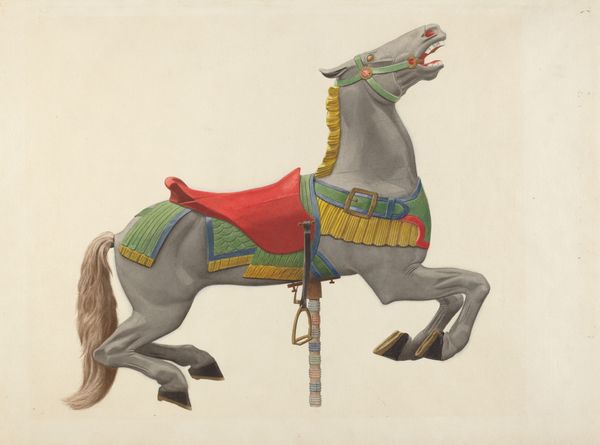
drawing, watercolor
#
drawing
#
water colours
#
figuration
#
watercolor
#
geometric
Dimensions: overall: 22.8 x 29.9 cm (9 x 11 3/4 in.) Original IAD Object: 44" high; 39" long; body: 22 1/2" high; saddle: 15 1/2" long
Copyright: National Gallery of Art: CC0 1.0
Editor: So here we have Ernest A. Towers, Jr.’s "Carousel Horse," circa 1938, created with watercolor. It's very illustrative and makes me think about blueprints or industrial design. What jumps out at you? Curator: For me, it's all about the materiality of the design. A carousel horse, right? It's supposed to be this grand, almost fantastical object of leisure and spectacle. Yet here it is presented as a diagram, a design object, stripped bare. Editor: What do you mean stripped bare? Curator: Well, think about it. We see the rendering, the careful delineation of form, and what are likely dimensions or specifications next to the drawing. It’s exposing the horse, in essence, as a manufactured product. It underscores the labor involved in its creation. These objects were literally churned out, a factory process, if you will. The artistry of an individual carving gives way to the industrialization of leisure. It challenges our assumptions about folk art and the concept of “art.” What purpose does that serve in your mind? Editor: I see what you’re getting at. I initially saw it as a joyful object, but you've shifted my perspective. It almost feels critical of that manufactured joy, like it is emphasizing the transactional aspect. Curator: Exactly! It invites us to consider how these seemingly innocent objects are embedded in broader systems of labor, production, and consumption. What did you find most interesting about learning this? Editor: How considering the materials and construction changes my perspective on art. Thanks! Curator: Absolutely. It all boils down to perspective!
Comments
No comments
Be the first to comment and join the conversation on the ultimate creative platform.
